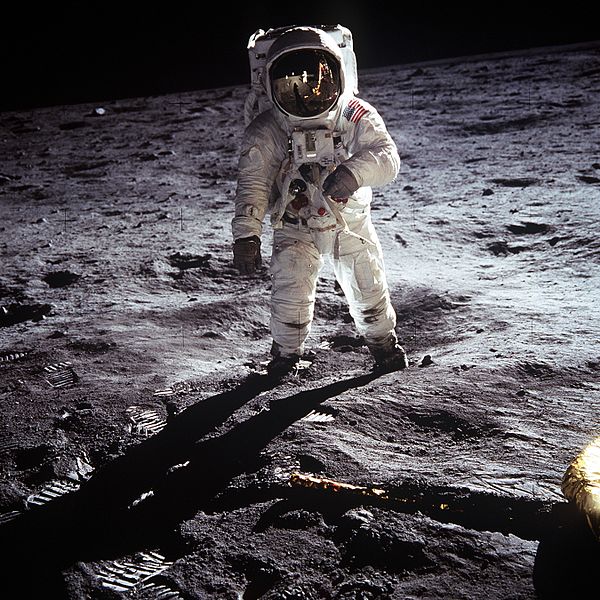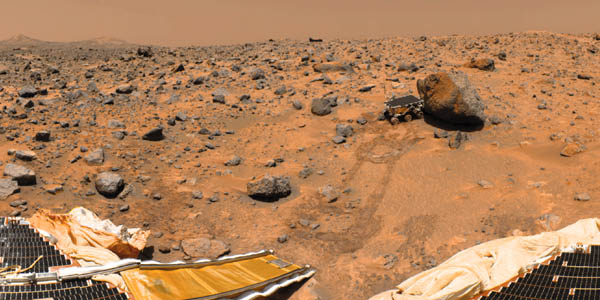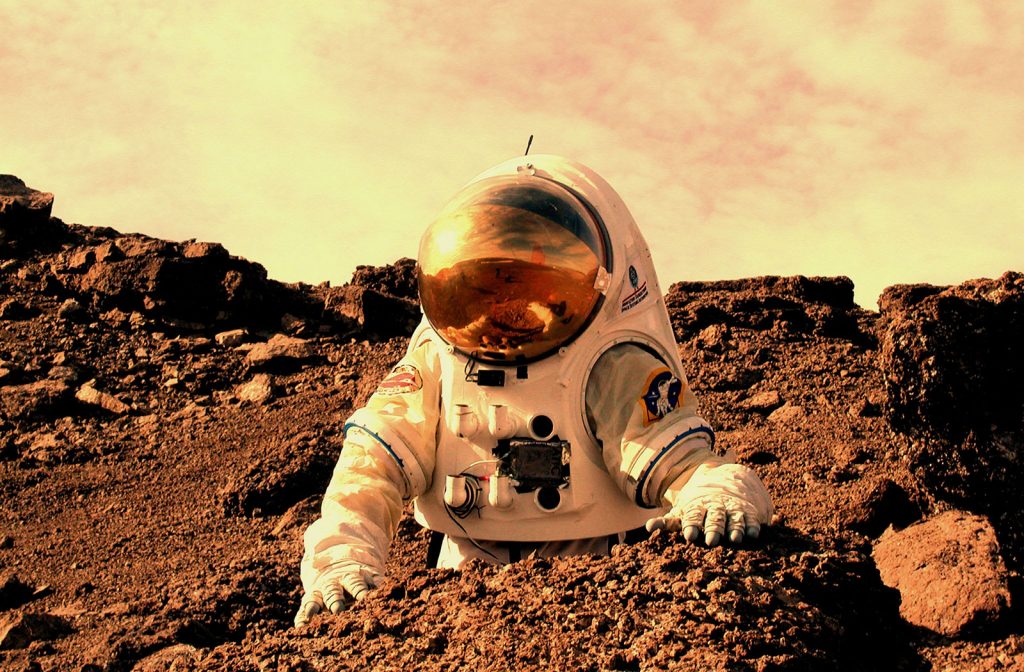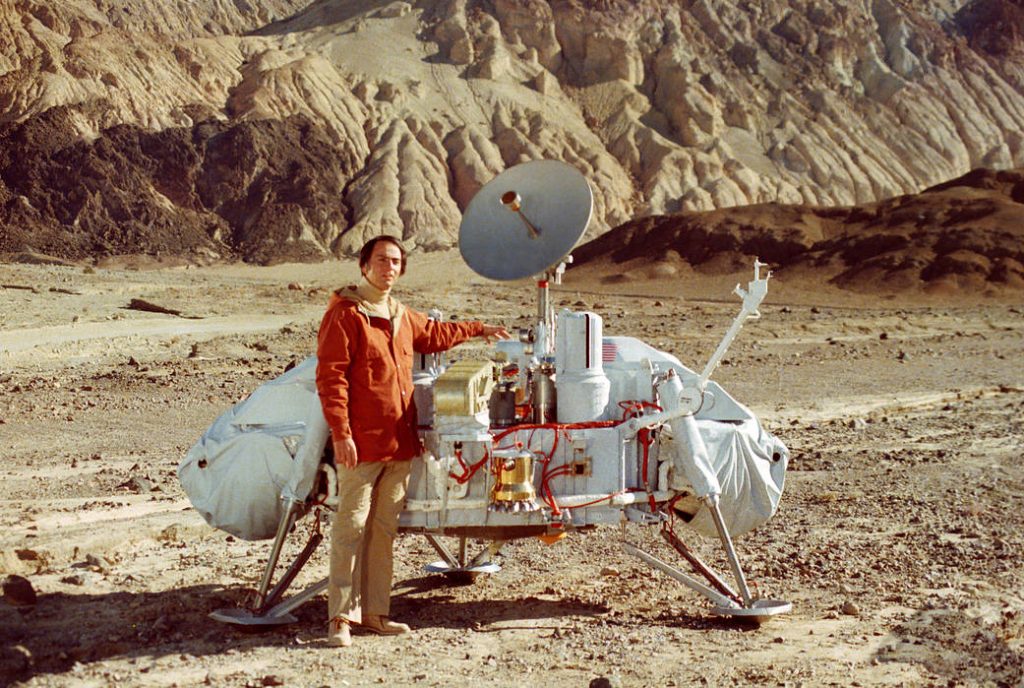On the 50th Anniversary of the Apollo 11 Moon Landing, Michigan Quarterly Review revisits our Winter 1979 special issue on the Apollo Moon Landing and the decade that followed.
Carl Sagan’s essay, “Two Ships in the Cosmic Ocean,” reflects on the frontiers of space traversed in the years after the moon landing, specifically on the 1976 Viking Mission to Mars.

After a three century pause to gather wherewithal, humanity has once again entered a time of epic voyages of exploration and discovery. The caravelles which discovered the Americas, plied the Pacific and circumnavigated our planet were manned. The interplanetary exploratory vehicles of the late twentieth century are unmanned, complex and exquisitely instrumented devices from Earth, partly under control of the distant home planet and partly on their own.
But the lengths of the voyages then and now are comparable. Compared to the gross national product of Spain, England or France in the sixteenth century the relative cost of exploratory missions is now much cheaper. In both cases we humans are seeking a New World, figuratively then, literally now.
Many historians believe it no coincidence that the Rennaissance and the Enlightenment coincided in time with the great age of European exploration and discovery. In a relatively ingrown and insular Europe the journeys of Marco Polo and Magellan opened vistas, broadened possibilities and provided profound and novel perspectives. There were other lands, other peoples, other ways of viewing the world.
The circumstances today are similar. Our planet has been explored. We are in the midst of a great cultural and technological homogenization, in which common habits of thought and a shared world view are rapidly embracing even the most distant and obscure parts of our small planet. At just this moment comes an opportunity to examine other worlds, neighboring planets in space which are in some ways similar and in some ways profoundly different from our own familiar world.
By studying the geology, the meteorology and the biology, if any, on these other worlds, we have a unique opportunity to broaden both our theoretical and our practical understanding of the Earth. For these are sciences of global scope and it is neither easy nor prudent to perform experiments on a global scale. But the neighboring planets are natural experiments on the alternative pathways that worlds may take. I believe the eventual practical benefits from this scientific perspective will pay many times over for the cost of unmanned planetary voyages.
But there is another sense of perspective, which speaks to the deepest human questions, longings and aspirations. By examining other worlds we have a significant chance of improving our understanding of the nature, origin and fate of our planet and ourselves. It is possible to see how planetary exploration is already beginning a deprovincialization of the Earth.

Viking has landed on Mars. For the first time in human history two artifacts, messengers from the planet Earth, have landed on the surface of the red planet and returned a stunning bonanza of scientific information. The Viking mission is almost completed. It is clear that we have obtained more essential scientific information about Mars with Viking than in the entire previous history of space flight.
The Lander cameras have revealed the nature of two places on Mars. We see a reddish rock-strewn desert extending to a horizon nearer than the horizons are on Earth. Framed against the bright, pinkish sky are hills and mesas and the eroded remnants of the rims of impact craters. There are billowing sand dunes through which marches a line of boulders on the crest of a ridge. Many of the rocks are quite ordinary looking, although there are rocks and furrows and pits which seem, at least at first, somewhat strange and unearthly.
Overall the scene has a haunting familiarity. It looks very much like semidesert environments all over the planet Earth-in the American southwest, for example. One can almost imagine a weary and grizzled prospector, leading a mule, suddenly appearing over a nearby hill, glancing briefly and incuriously at the Viking lander in the foreground, shaking his head and wandering on. But we have seen no such prospector. There are no cactus or grasses or rabbits on this landscape-at least so far as we know.
The microbiology experiments on Viking have yielded fascinating and enigmatic results. By the standards established before launch, two of the three microbiology experiments have had a positive outcome-if comparable results had been obtained at some spot on the Earth the existence of a terrestrial microbiology would have been considered established. But Mars is not the Earth and in particular the chemistry of the soil, bombarded by ultraviolet light from an ozone-free sky, may be very different on the red planet than it is here. No one has succeeded in duplicating in detail the Viking microbiology results using a plausible martian chemistry alone and no biology. But perhaps in some terrestrial laboratory such a result will be forthcoming. Until then the issue remains entirely open. And since it is easy to think of other sorts of possible life on Mars which the preliminary Viking microbiology experiments could not have detected, it is clear that the question of life on Mars must ultimately await further exploration.
But consider the two alternatives. If we find life on that planet it will be, I think, a monumental event in human history, as well as the most significant discovery in the history of the biological sciences. But suppose that the planet, after intensive study by Vikings 1 and 2 and more sophisticated later vehicles, proves indeed to be lifeless. In that case, too, we will have gained. For then Mars will be seen as a world in many respects similar to the Earth, as a place where winds and running water have transformed the landscape, but as a place without life. Then Mars must illuminate the question of the origin of life on Earth. For we will then have examined two planets near each other in space, equally old, with rather similar environments, but life has begun and evolved on one but not the other. Why?
When I look at Viking l’s panorama I have an eerie sense that this may be what the Earth looked like before the origin of life-an interesting, reworked, eroded, developed landscape, but one without the transmuting presence of biology. I do not mean that if there is no life on Mars today it will one day spontaneously evolve there: the conditions necessary for the origin of life are now gone irretrievably from both Earth and Mars.
If all life were exterminated from the Earth today, life would never again arise on our planet. Organic molecules are produced by ultraviolet light or lightning discharges in planetary atmospheres rich in hydrogen. But because of their small masses, primordial hydrogen has escaped to space from both Earth and Mars. In the early histories of these planets, however, abundant prebiological organic chemistry must have occurred.
That hauntingly familiar martian landscape cries out to us. It is difficult to suppress the notion that if the planet does not today belong to someone, it is then an untenanted world awaiting the arrival of humans. The surface area of Mars is about equal to the land area of the Earth. It is a heterogeneous place. The entire history of the past exploration of Mars indicates that there are a host of astonishments and delights awaiting future discovery.
But one thing seems clear. Having landed on Mars we shall have to go back to explore it, to learn from it, to cherish it and perhaps to transform it. It may be that the voyages of Viking are of greater ultimate importance to the human race than even the voyages of Christopher Columbus almost five centuries ago.
We have put our ships into the cosmic ocean. The waters are benign and we have learned to sail. No longer are we bound to our solitary island Earth.

Read the rest of Michigan Quarterly Review‘s Special Issue on the Apollo 11 Moon Landing in our Archives.




